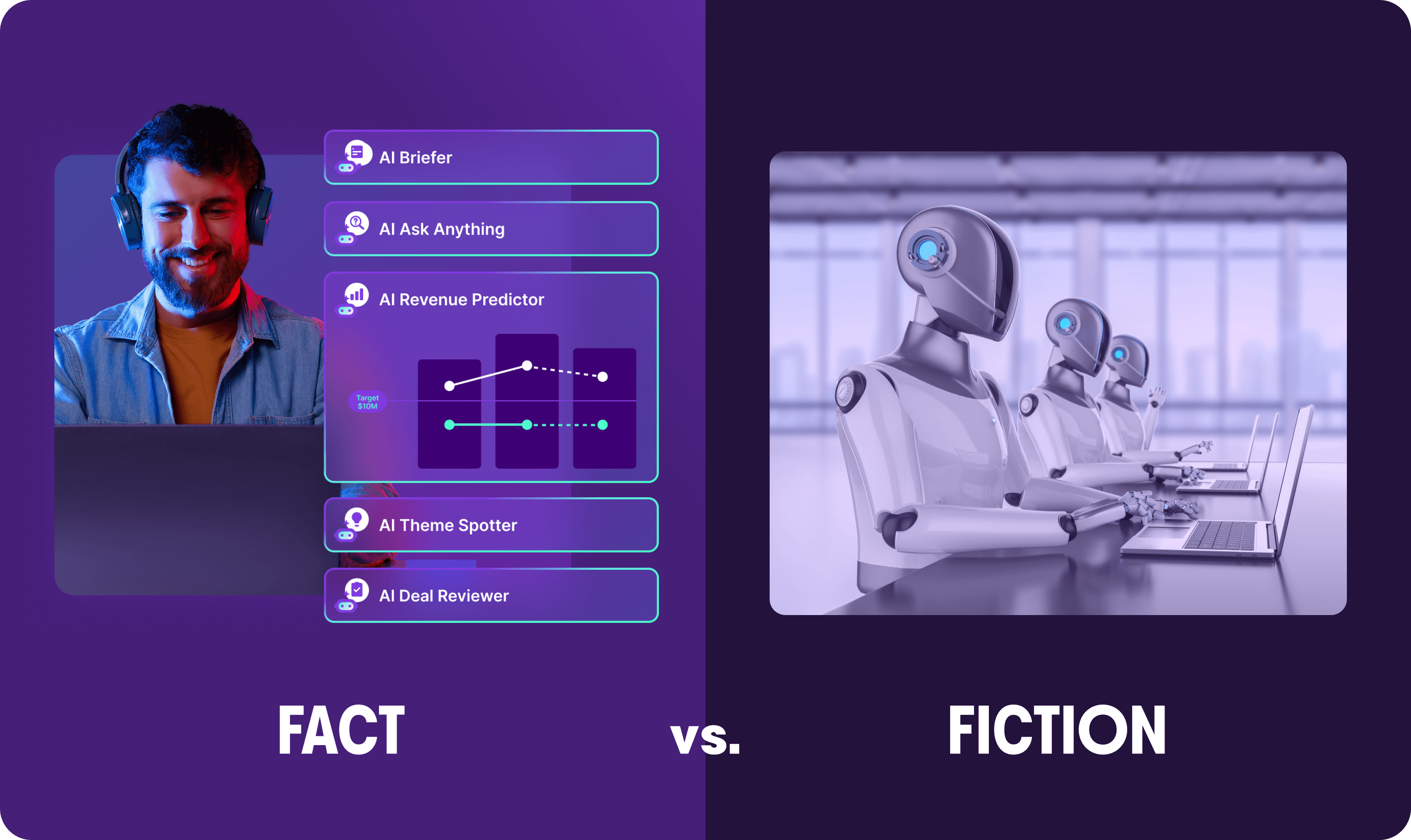Selling skills
Your guide to sales qualification

Jonathan Costet
Content Author
Published on: January 2, 2023
Many salespeople waste too much time on prospects with little to no chance of converting. Meanwhile, the good prospects theyshould’vefocused on have already gone cold.
This is why sales qualification is so important — it helps you identify and prioritize prospects more likely to become buyers.
How do you know if a potential customer is a good fit for your solution? How do you know whether to move prospects through your sales funnel or disqualify them?
Read on to learn more.
We’ll explain what sales qualification is and why it’s important. We’ll also cover the different sales qualification frameworks you can use to streamline your qualifying process.
What is sales qualification?
Sales qualification is a key step in the sales process in which a salesperson determines whether a prospect is a good fit for a product or service. It typically involves comparing a prospect against an ideal customer profile (ICP) — a description of the company that would benefit from your solution. If there’s a good match, the sales rep can qualify the prospect.
Why is sales qualification important?
Aside from helping reps make the most of their time, there are other benefits to qualifying your potential buyers.
Let’s take a closer look.
Improves your close rates
There’s only so much you can do for a prospect that lacks the interest in or need for your offer.
If you pass on prospects without qualifying them, your sales team will waste a lot of time chasing prospects that won’t go anywhere. As a result, their close rates will suffer.
Proper qualification ensures that your reps focus on the right buyers. It also ensures they’re spending their time on prospects likely to bring value to the company (instead of poorly qualified leads).
Delivers a personalized experience
Order your favorite coffee from Starbucks, and you’ll hear your name when it’s ready. This personalized touch tells you, the buyer, that you’re not just another number.
The same idea applies to B2B environments. Creating a personalized experience can leave a favorable impression and even help you sell more.
B2B buyers are 34% more likely to buy from sellers that master customer experience.
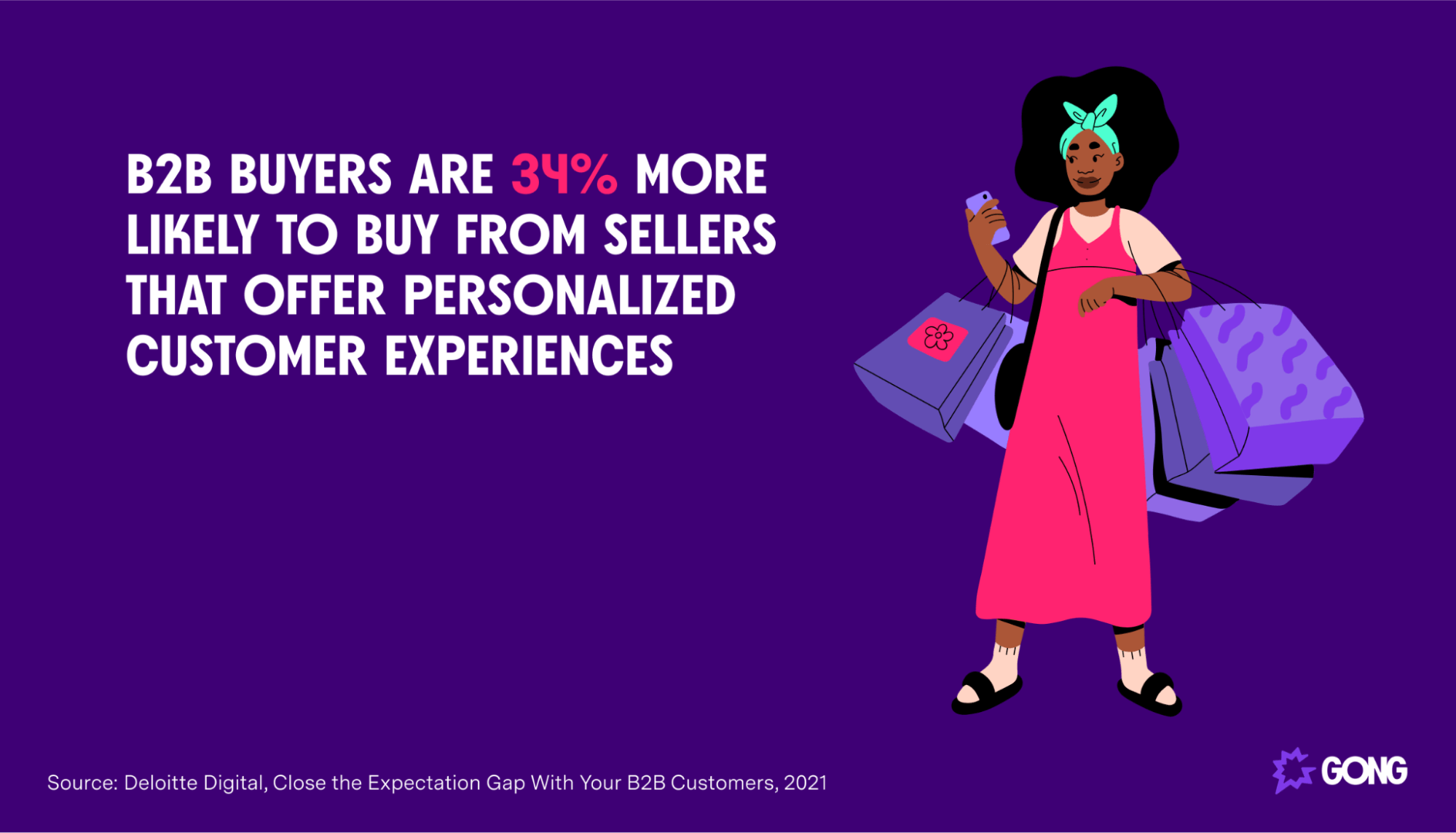
You can offer a more personalized experience throughout the sales cycle with a smaller segment of qualified prospects. Reps can take the time to understand their pain points and craft more compelling pitches.
Increases customer retention
Every sale you make has positive implications, right?
Not necessarily.
If you sell to an unqualified prospect, there’s a good chance they’ll churn once they discover your solution doesn’t fit their specific needs. They may even voice their complaints on social media.
By qualifying your prospects ahead of time, you can increase your customer retention. That means more revenue and happier buyers — buyers who can act as brand ambassadors for your company through word-of-mouth marketing.
What are the steps in the sales qualification process?
Sales qualification is different for every company.
However, a typical sales qualification process includes the following steps:
1. Define your ideal customer profile and buyer personas
Before you can qualify as a prospect, you need to have a clear idea of who you are buyers are.
The first step is to create an ICP — a description of the type of company that would benefit most from your solution. An ICP includes characteristics such as:
- Industry
- Revenue
- Employee count
- Geography
- Key challenges
- Tech stack
This list is by no means exhaustive, but it offers a great starting point. These are just some attributes that a buyer should have before you move them down your sales cycle.
Here’s an example of a sales ICP:

Your ICP will be based on actual data.
Look through your CRM or whatever sales tools your frontline sales managers use. Then, analyze data about your current buyers and identify common characteristics.
Of course, behind the companies that fit your ICP are individuals.
So, you’ll want to define a buyer persona — a description of the people within your ideal company, including their titles, job responsibilities, and pain points.
Again, use data from your CRM to create this profile. You can also gather insights from your actual buyers through surveys and interviews.
2. Set up a lead scoring system
Another excellent sales lead qualification tool is a lead scoring system in which you assign numeric values to a lead.
There are different ways to build a lead scoring model. One popular lead scoring method is to assign values based on an action like visiting a certain webpage or opening an email. The idea is that someone who has signed up for a free trial will be more valuable to your company than someone who simply browsed your blog.
Another method is to set up a lead scoring system based on your ICP. For example, if most of your best buyers are in technology, you might assign more points to this attribute.
Here’s a simple example of a lead scoring system:
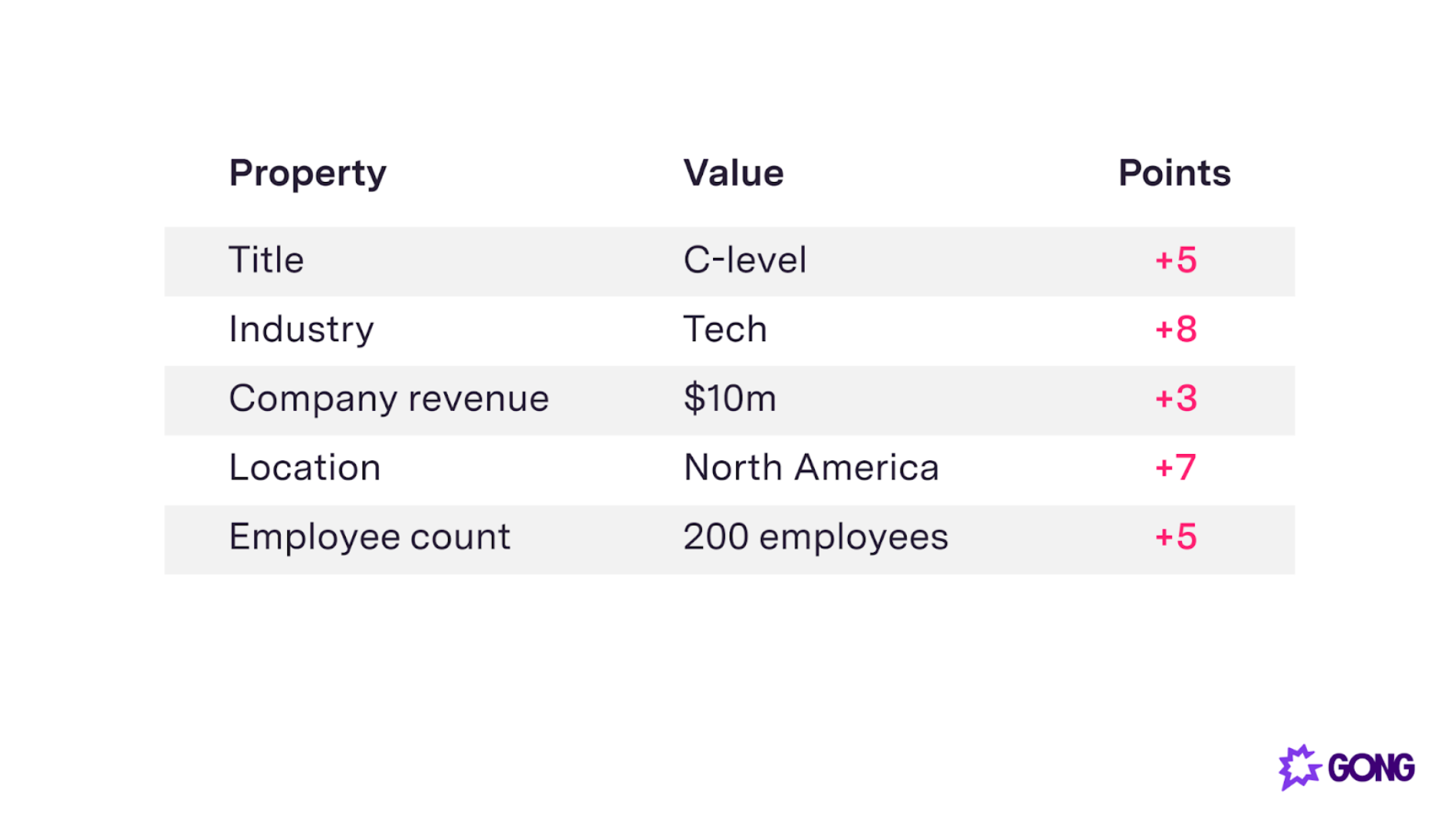
With a lead scoring system, you can assess the likelihood of quality leads converting. The higher the score, the more likely they’ll buy.
Make this a collaborative buying process between marketing and sales. Each sales team should offer input on which activities or attributes have higher values.
3. Research a prospect before you reach out
What separates the top salespeople from average performers?
The top reps do their homework.
82% of top-performing reps say they always research their prospects before they reach out.
Be sure to research your prospects before you make initial contact. Not only does this let you quickly determine whether they’re worth pursuing, but it also arms you with insights you can reference to personalize your outreach and make each cold call more effective.
Here’s what you should look for in your initial research:
- Annual revenue
- Employee count
- Locations
- Tech stack
- Leadership hires
- Funding round
- Industry
- Year-over-year headcount growth
Use resources like LinkedIn, Crunchbase, and the company’s website to gather this specific information. There are also sales intelligence tools that can help you pull more technographic and firmographic data. And remember to also research the personyou’re reaching out to. Use platforms like Facebook and Twitter, as well as their blog if they have one.
4. Ask the right sales qualifying questions
Research can only take you so far.
If a prospect matches your ICP and has a high enough score, it’s the right time to get them on a discovery call and ask them the right questions. The goal is to determine whether to move the prospect through your sales process or disqualify them.
You can ask your potential prospects the following questions:
- What business problem are you trying to solve?
- How are you currently addressing this problem?
- What are you doing about it now?
- How have you tried to solve this problem before?
- What’s your budget for this solution?
- Do you have a timeline for its implementation?
Want even more relevant questions?
Download our 43 Ultra-Specific Sales Qualifying Questions to learn how to ask the kinds of questions that will position you as a trusted advisor and fill your pipeline.
Using sales qualification frameworks to qualify prospects
While every sale is different, all closed deals commonalities. Here’s a look at the sales qualification frameworks that distill these characteristics into a more structured process.
Get ready for a barrage of acronyms.
BANT
Originally developed by IBM, BANT is one of the oldest sales frameworks. It provides a simple framework for qualifying B2B buyers.
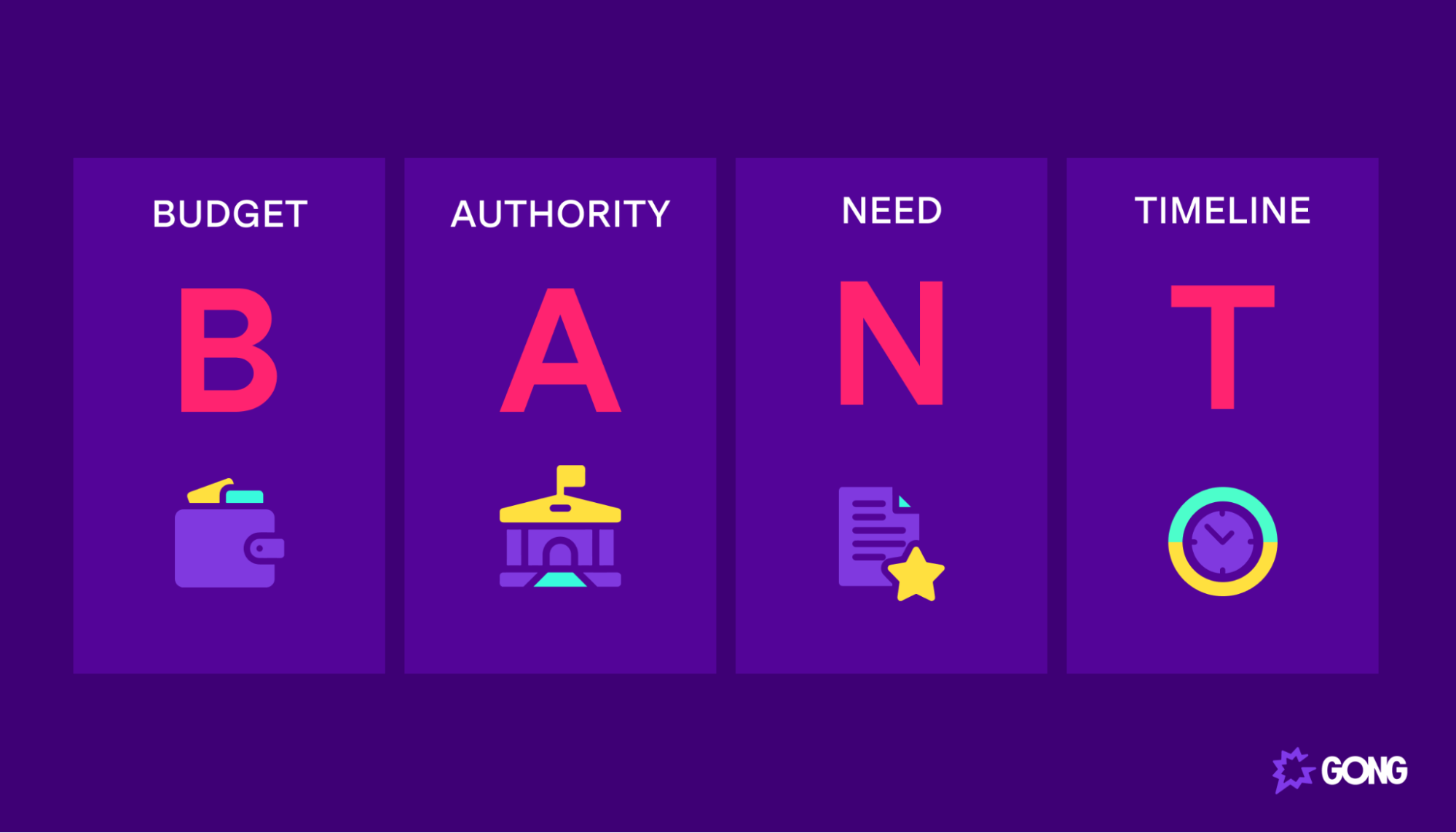
BANT stands for:
- Budget:Can the prospect afford your solution? Establish early on whether they have the budget.
- Authority:Does the prospect have decision-making authority? Ideally, you want to work with a prospect who can sign off on a deal.
- Need:Does your solution solve your prospect’s pain points? If a prospect doesn’t have a true need for your solution, disqualify them immediately.
- Timeline:How soon is the prospect looking to implement a solution? Understanding timelines can help your reps determine which prospects to prioritize.
According to the BANT framework, prospects are viable if they meet at least three of these four criteria.
CHAMP
The CHAMP framework s a few similarities with BANT, but it puts buyers’ needs first. CHAMP stands for:
- CHallenges:What challenges are your prospects facing, and what solutions have they tried? Reps are trying to understand how they can help overcome these challenges.
- Authority:Is the prospect involved in the decision-making process? If not, you’ll want to determine who has the authority to sign.
- Money:How much money has the prospect set aside? It’s important to determine whether they can afford your solution.
- Prioritization:Is there a sense of urgency with the problem? If a prospect wants to solve their problems as soon as possible, you’re looking at a faster implementation timeline.
MEDDIC
The MEDDIC sales qualification framework was developed by Jack Napoli while he was working at technology company PTC. It’s ideal if you’re selling a more complex solution that involves multiple decision-makers and long sales cycles.

MEDDIC stands for:
- Metrics:Find out the goals that your prospect wants to achieve. These should be quantifiable so that you can effectively position your solution’s economic benefit.
- Economic buyer:Determine who has the power to authorize spending. The key to closing deals is to speak to this person and get them on your side.
- Decision process:In addition to decision criteria, you need to understand what a buyer’s internal approval and purchase process looks like.
- Decision criteria: Buyers typically consider different options when comparing vendors. Understanding what these criteria are will help you tailor a winning sales pitch .
- Identify pain:Once you engage with a prospect, you need to identify what their business pain points are so you can position your solution effectively.
- Champion:The champion is someone inside the buyer’s organization who advocates on your behalf. Their influence is key to pushing a sales opportunity forward.
Download our 26 MEDDIC Questions To Supercharge Qualification to make this framework work for you.
GPCTBA
GPCTBA is a sales qualification framework developed by HubSpot to determine whether a prospect could benefit from your products.
GPCTBA stands for:
- Goals:Determine your buyers’ quantitative goals. What measurable results do they want to achieve
- Plans:Find out what your buyers have done to achieve their goals. What worked, and what didn’t?
- Challenges:Define your buyers’ challenges and show them how your solution can help them avoid negative consequences.
- Timing:Maintain momentum to keep a deal from stalling. When do your buyers plan to implement a solution?
- Budget:Determine your buyers’ budgets. How much have they set aside? How much are they currently spending? Be sure to reinforce the value of your solution.
- Authority:Engage with the decision maker as early as possible. If your contact isn’t an economic buyer, try to find out who has the authority to make a buying decision.
ANUM
ANUM is similar to the BANT framework, but it makes determining the decision-maker over the budget a top priority. It stands for:
- Authority:Is the prospect the key decision-maker? If not, ensure that you speak to someone with buying power.
- Need:What are their needs? Just like with the BANT framework, you need to determine whether the prospect truly needs your solution.
- Urgency:How soon is your prospect looking for a solution? More urgency means shorter sales cycles .
- Money:Does the prospect have the budget for your solution? Determine whether they can afford your solution and how much they’ve allocated.
The ANUM framework ensures that you’re speaking to the right person before you start digging into their needs.
FAINT
The FAINT qualification framework recognizes that some buyers don’t have a budget for a solution. As such, these prospects need to be handled a little differently.
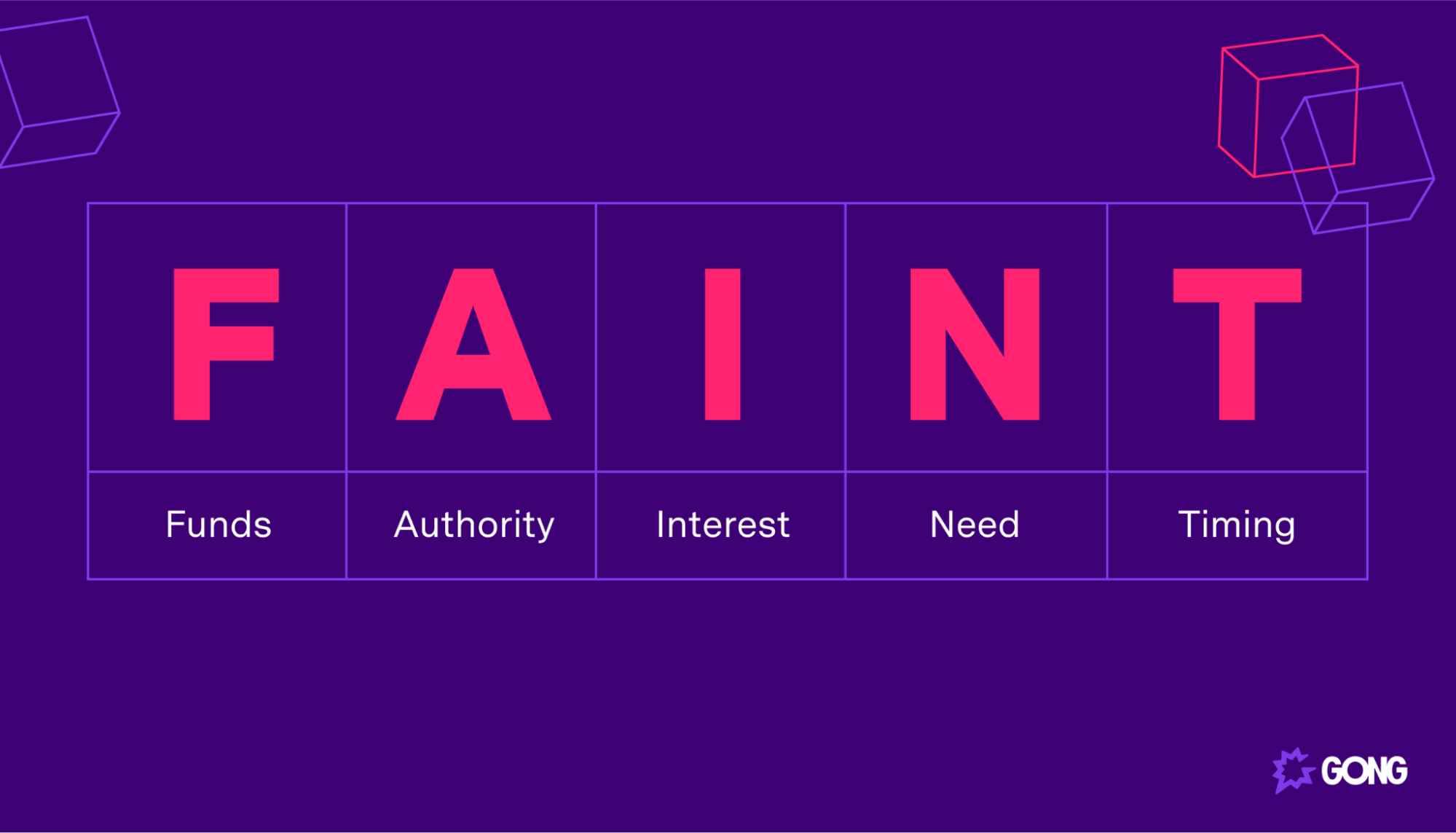
FAINT stands for:
- Funds:Determine whether a prospect has the funds to make a purchase. This could involve digging into their financial statements or searching for news on recent funding.
- Authority:Determine who has the authority to make a purchase decision. Use resources like LinkedIn to do this.
- Interest:Generating interest is key to moving deals forward. When a prospect says, “Tell me more,” you’re on the right track.
- Need: Once you’ve established interest, you need to position your solution as a need. This involves asking the right sales questions .
- Timing:Determine when the prospect is looking to implement a solution. If they have a short timescale, the salesperson will know to prioritize this prospect.
Every company has different sales processes, so what works for one might have different results for another. Experiment with different sales qualification frameworks to find one that works for your processes.
No matter what sales methodology you use to qualify ideal customers, you need to know that each sales rep is actually followingit. This will help you measure the effectiveness of a sales qualification framework.
With Gong, you can set up trackers to trigger alerts when a sales rep asks specific framework questions in their calls. This allows you to assess how well your team is adopting a sales methodology and if you need to provide additional sales coaching .
When should you qualify or disqualify a prospect in the lead qualification process?
Qualifying prospects is one of the most important steps in the sales process. But it’s not always easy to determine what constitutes a good prospect.
Red flags to watch for
Here are the top signs that a prospect isn’t a good fit:
- They don’t need your solution:If your prospect is looking for something that you don’t offer, it’s safe to disqualify them right away.
- They can’t afford your solution:There’s a reason why most frameworks include budget as a qualification criterion. If a prospect can’t afford your solution, then move on.
- They won’t commit to the next steps:Driving the next steps is key to maintaining deal momentum. If a buyer won’t commit, they’re probably just not interested.
Signs that a prospect is ready to close
Here are the signs you’ll want to pay close attention to:
- Pricing is discussed on the first call: We have found that win rates are 10% higher when pricing is discussed on the first call. Don’t be afraid to discuss budgets right away. A positive response is a good sign.
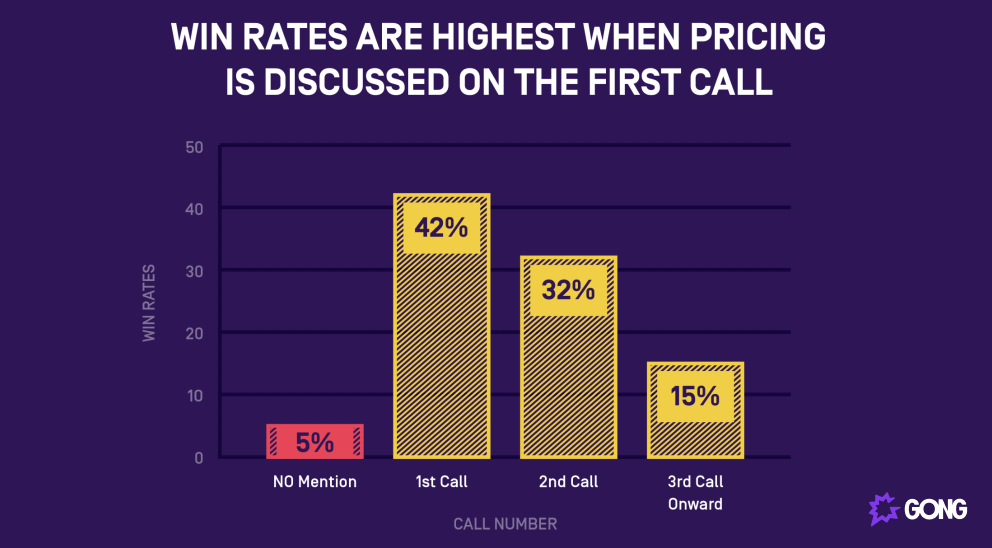
- The prospect matches your ICP: If a prospect matches your sales ICP , there’s a good chance they can benefit from your solution. Of course, you’ll still need to do your research and due diligence.
- The prospect uses the word “probably”:Pay attention to whether the prospect says a word like “probably” when responding to a timeline question. This response, though cautious, is optimistic.
There are no guarantees in life. However, these signs indicate that you’re heading in the right direction. A strong value proposition will help keep the deal moving forward.
Refine your sales qualification framework with Gong
Sales qualification can make or break your sales process.
Get it right, and you’ll fill your pipeline with qualified prospects ready to buy. But get it wrong, and you’ll bog your reps down with unqualified prospects who will drain their time and energy.
Ready to supercharge your sales qualification?
Book a demo to see how Gong brings clarity into your sales pipeline. Data-backed insights help you determine which messages resonate with your prospects and which ones need more work.

Content Author
Jonathan Costet is the Senior Director of Revenue Marketing at Wiz. Before this, he was Senior Manager, Growth Marketing at Gong, where he played a crucial role in driving demand generation through data-driven strategies. At Gong, Jonathan harnessed the power of revenue intelligence to craft effective messaging, improve customer retention, and optimize sales forecasting. He was instrumental in using Gong's platform to unlock insights that helped target the right buyers and maximize marketing efficiency.
Discover more from Gong
Check out the latest product information, executive insights, and selling tips and tricks, all on the Gong blog.



